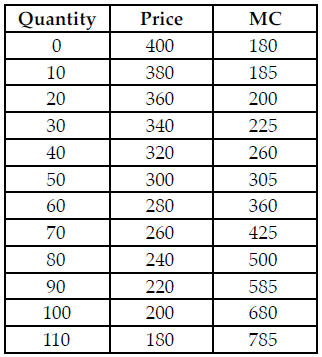Early bipedal hominins had inefficient locomotion and struggled to survive in their environments
a. True
b. False
Correct Answer: b
You might also like to view...
Refer to the table below. What is the profit-maximizing output level?

The above table shows the quantity demanded at varying prices and the corresponding marginal cost of production for a monopoly firm.
A) 50 units
B) 60 units
C) 40 units
D) 30 units
The term 'macula' refers to:
A. a feature of the primate brain B. an area of the primate retina C. the primate opposable thumb D. a specialization of the primate placenta
The current sourcing method used to fingerprint obsidian, and used by Richard Hughes to verify James Griffin's determination that obsidian in the Ohio Hopewell mounds had come from Obsidian Cliff in Yellowstone National Park some 2400 kilometers away is
a. instrumental neutron activation analysis (INAA). b. petrographic analysis. c. microscopic observation of thin sections. d. x-ray fluorescence (XRF). e. direct acquisition.
Probable adaptive advantages of bipedalism do NOT include that bipedalism
A. helped to reduce exposure to solar radiation. B. helped hominins survive in open savanna environments. C. increased hominins' ability to brachiate through trees and thus escape from predators. D. allowed hominins to carry things to a home base. E. increased hominins' ability to see over tall grass and thus to spot food and predators.